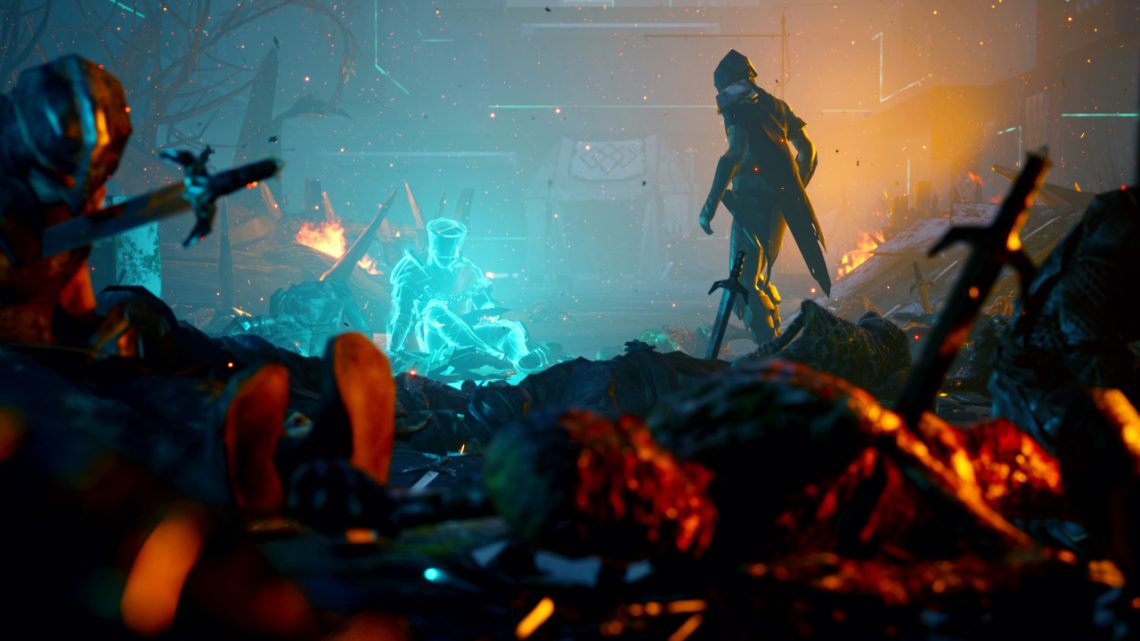The Deathbound demo was all that we could have asked for and more. It features a wide variety of new concepts that innovate the “soulslike” genre it is based on, while keeping those traditional traits we tend to love from it.
You play as a character formed as a result of an experiment by the Essencemancers, a sect of scholars within the game that hold forbidden knowledge. The main setting takes place in Zieminal, a world where faith and science clash and you (as the player) are forced to find your way. Starting off in the “Lower Street” level, you make it through and work your way towards a better understanding of just what has transpired within the world for it to have become as it is.
As you traverse through the game, you will find that there are many enemy types for you to defeat in a mixed fusion of a technological world spurred on by magical forces.
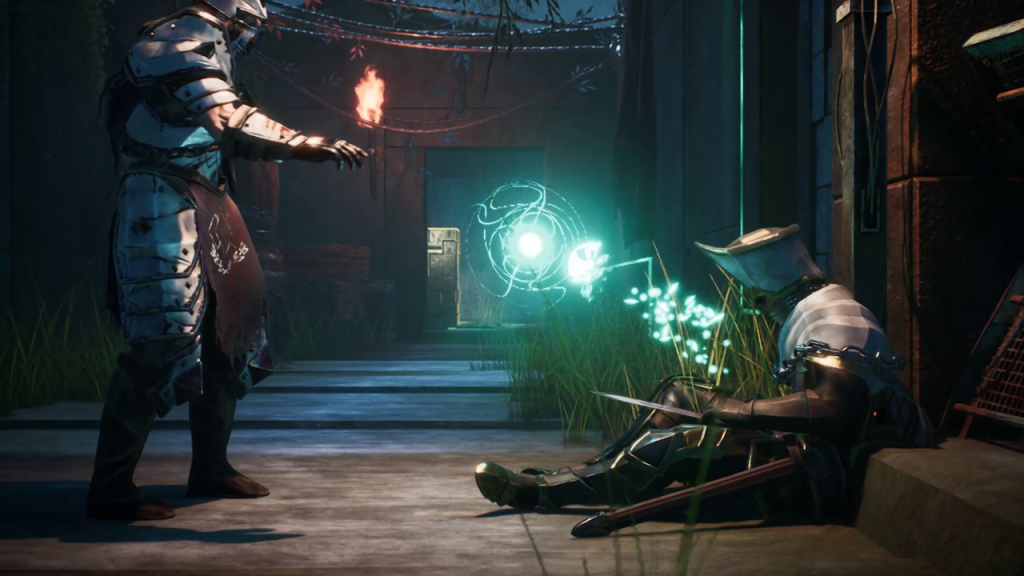
What is so great about Deathbound?
The game, despite being considered to be one of many in the wide-spanning genre of soulslike titles is still quite unique in many ways. It employs players to utilize its specialized morphing system, which allows you to switch from character to character, and even transcends the idea by introducing many other variants to this mechanic as the game progresses, such as morph strikes and morph dodges.
Gamers who are accustomed to the genre are already going to have an easy time mastering the controls. But players that aren’t shouldn’t fear! The game does a great job of leaving tutorial messages whenever you reach an important point in the game that’s non-intrusive to the actual gameplay itself.
Besides the main menu music, which was masterfully done with the perfect blend of gloom throughout its lower resonating pitches, the music, in general, is quite good, while some of the sound effects did take me by pleasant surprise with their quality.
For the gameplay, well… there’s a lot to unpack here, so I’ll leave that for a separate section dedicated to explaining all the quirks and special features.
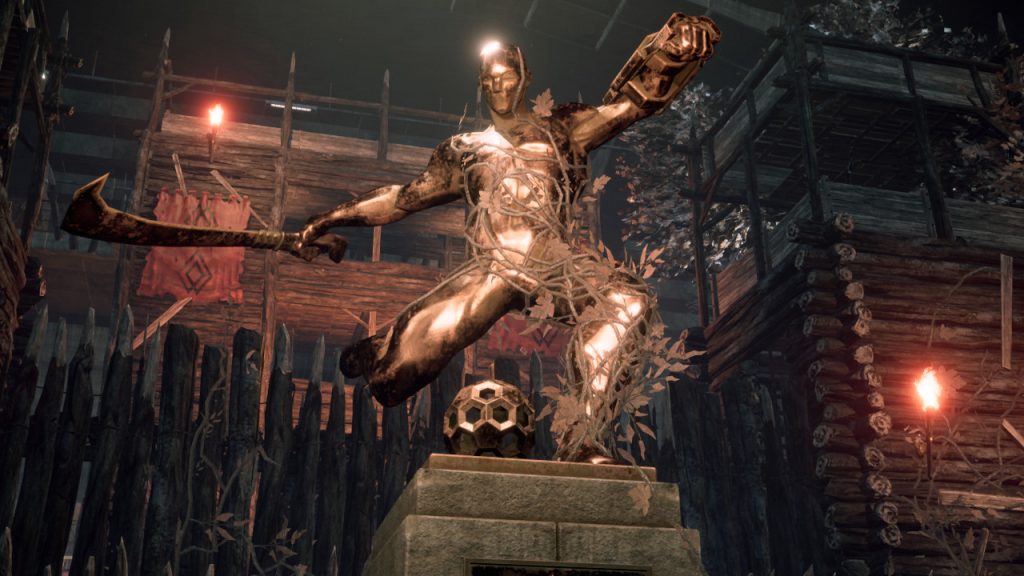
What is the story like?
Long ago, it all began during a grand deception between two goddesses where Goddess Life tricked Goddess Death into stealing her powers and creating the First Men that were immortal. This immortality allowed them to create great civilizations, inclusive of cities that spanned the continent and magic mixed with technology.
However, Goddess Death was not fond of the deception. She gradually seduced the First Men over to her allure of dying after being overwhelmed by an endless existence due to their immortality.
The duality that is represented here lives on within the current age, where “death” desires to be deceived once more by those of a new civilization. The Essencemancers create you as a result, and you are left to hold essences within your being that feature the dualistic factions of the “Church of Death” and the “Cult of Life” in their opposing, polar ideologies.
As you encounter new essences, you are able to view their “reveries” — stories that play out similar to memories that show you a large sum of what that character’s main backstory entails. This is typically how the story of Deathbound is displayed for the player, along with the usual flavor text that pervades the genre with various items that support this.
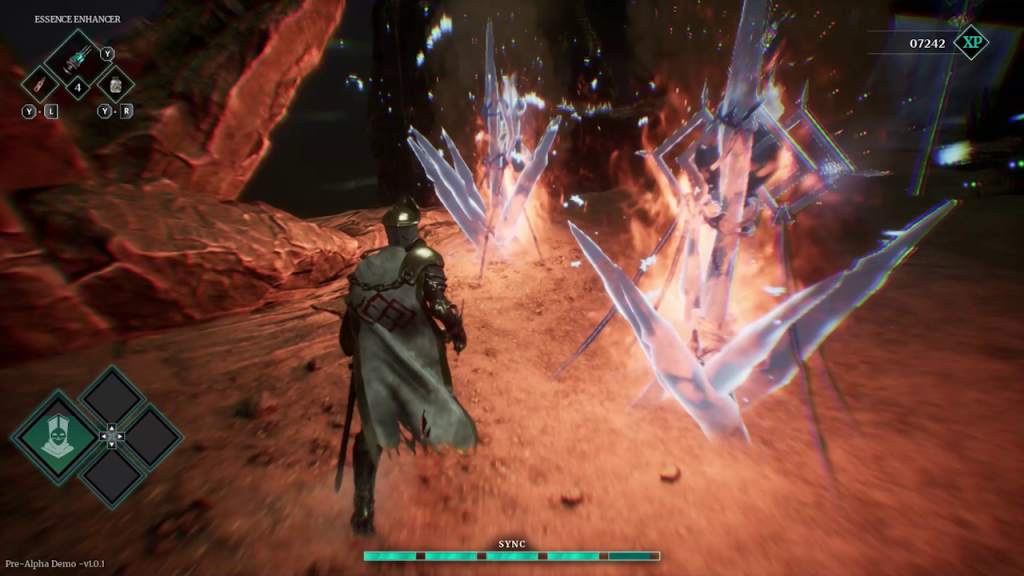
How is the gameplay?
For some mechanics, depending on your experience with these types of games, I am positive that it would take a bit more time to get used to in terms of timing and execution. However, it wouldn’t take long for the player to begin using these in their game plan on how to take down specific enemies— it would all just take some getting used to.
Something that might be considered a blessing is the dash mechanic, which helps you to dodge attacks. With perfect timing, it allows for a neat little “slow down” effect that also appeals to the overall “coolness” factor. The game actually managed to change my perception here, as I found dashes much more intuitive and less monotonous feeling than the traditional “rolling” that takes place in Souls titles. My only complaint here is that I wish the player had the ability to jump… there’s a lot of areas in the game where my natural instinct tells me, “I can jump there,” but without the feature, it’s impossible.
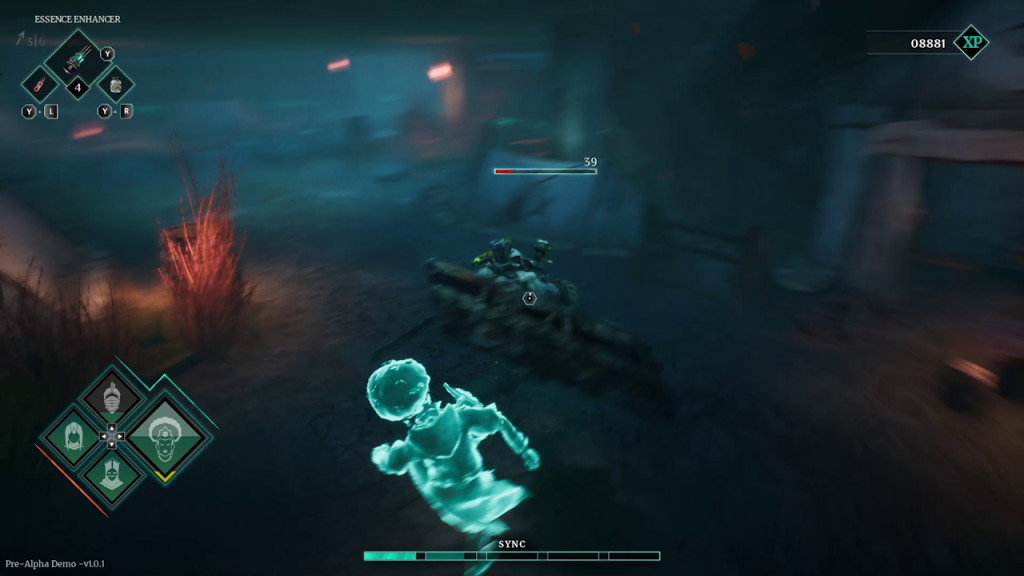
You have no options to modify your difficulty, which might be a let down to those hoping for that, but you have many options to modify practically everything else. The more typical options like suppress blood, toggling subtitles, changing language (only a few are available for the demo, with more likely for full release) are all available here. You can even suppress the aforementioned tutorial if you think you can discover everything on your own (although for the newer mechanics, it wouldn’t be advised, but you still have the option).
Quite frankly, I was even surprised to find an “arachnophobia” setting placed in there to toggle on and off. I had never seen something quite like that before, which shows you the extent of the developers in making sure each player had a comfortable and enjoyable experience. You would hardly find anything wrong with the good range of accessibility options here.
A notable lack I discovered was only being able to switch between two control schemes marked under Type A (traditional) and Type B (other) without the option of customization, but I can see that being implemented in the full release. A default keyboard layout is also available if that is your preferred way of playing. A standard vibration toggle would also have been appreciated.
While playing, you’ll find that each character’s stamina is tied to their health— a curious decision made by the developers, to be sure, but an interesting one nevertheless. It makes me think of a more logical approach, where characters who are obviously physically damaged to some degree are clearly less likely to be sprinting and attacking as much as a fully healthy individual.
All essences share a sync bar that generally fills up over time through combat. Once full, it allows you to execute special abilities like morph strikes and morph dodges, the former of which would become very important to master later on in the game for dealing with tankier enemies like bosses or mini-bosses.
Each of the many essences (characters) have their own unique fighting style, weapons and ideologies. Therone Guillaumen plays similar to what one would expect out of a traditional Souls character with his sword and shield, along with the added ability to parry. Therone is a member of one of the group’s factions in the Church of Death.
Deathbound has managed to blend together a way of representing both gameplay and story in a very clever way without it being too impactful on people who may not care about the story that much, but still leaving it as something for the player to consider.
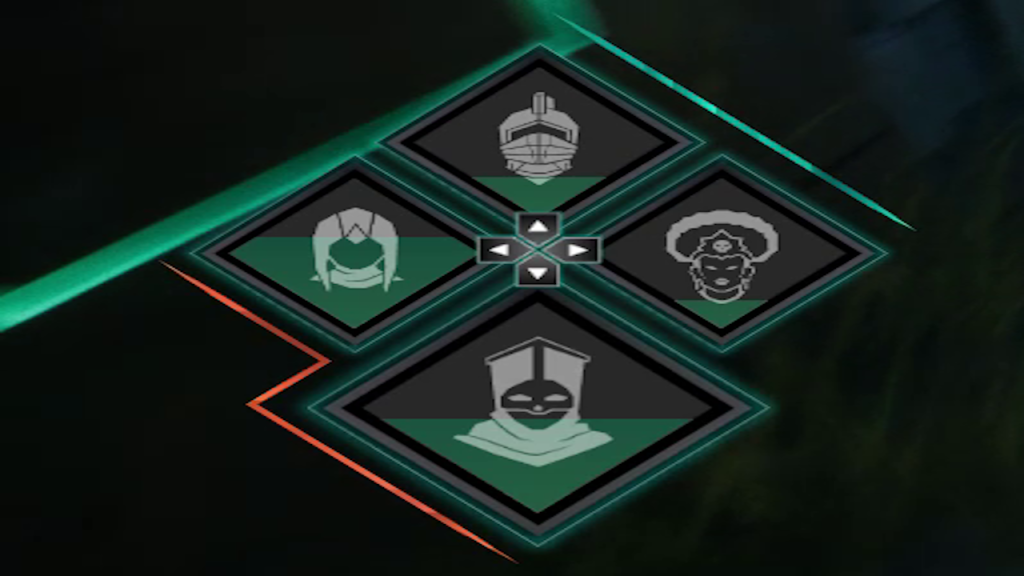
Simply put, it ties itself to a huge part of the game called “essence conflict and synergies.” This mechanic allows essence pairs to be empowered or weakened not by their personalities but rather their ideals.
If their ideals conflict, it Is represented by the orange line and grants a specific buff and debuff for that pairing. If their ideals synergize, it is represented by the blue line and grants a specific buff and no debuff. This allows the player to strategically think, and be able to mix and match among the many essences they would obtain to try to find the right pairs that synergize to their liking. As per usual, the game will make sure to tell you all about this beforehand with a tutorial message, so you aren’t confused about it.
Leveling up via the game’s skill tree is not bad either, but may just take some getting used to as you’ll have to decide exactly what new perks you want for which essences, and put some contemplation into your decisions. Similar decision-making may apply to the upgrade system for rings and artifacts, two equip item types in the game that typically have both mystic and ancient bonuses as per their effects. Thus, the player is forced to decide which bonus they will choose to upgrade at a given time with their upgrade materials (given their respective catalysts) depending on how they wish to impact their next battle.
The rest of your customization lies in whatever items you wish to have placed into your hotbar for easier use, and the aforementioned equip items come into play here. Perhaps shockingly, players would find that they cannot customize their weapons outside of what is left for them at default from their acquired essences. However, as this is just the demo, many of these things are likely to be subject to change in the future. By no means is there anything bad with the current system, but such just serves as a fair warning for those who may need to adjust their expectations.
Final Impressions
I strongly believe that this game can go quite far as long as it continues to innovate the Soulslike genre. The designs of the characters and the atmosphere of the setting prove to be very captivating, especially for those hoping for a darker yet thrilling gameplay experience. There were a couple of rare bugs I encountered at times, but such would be nothing new for a demo that serves a prime focus for fixing these bugs.
What the game pushes you towards is to be creative and tactical with how you approach it. You decide what items you wish to equip, what essences would work best and what type of strategy you would wish to have for each particular situation and battle. As of right now, there is no set release date yet for the full title, but as long as it continues down the path it has started with, I can tell it will have a smooth release planned for sometime in the future.
Deathbound’s demo is available to play right now on Steam. You can also wishlist it.

